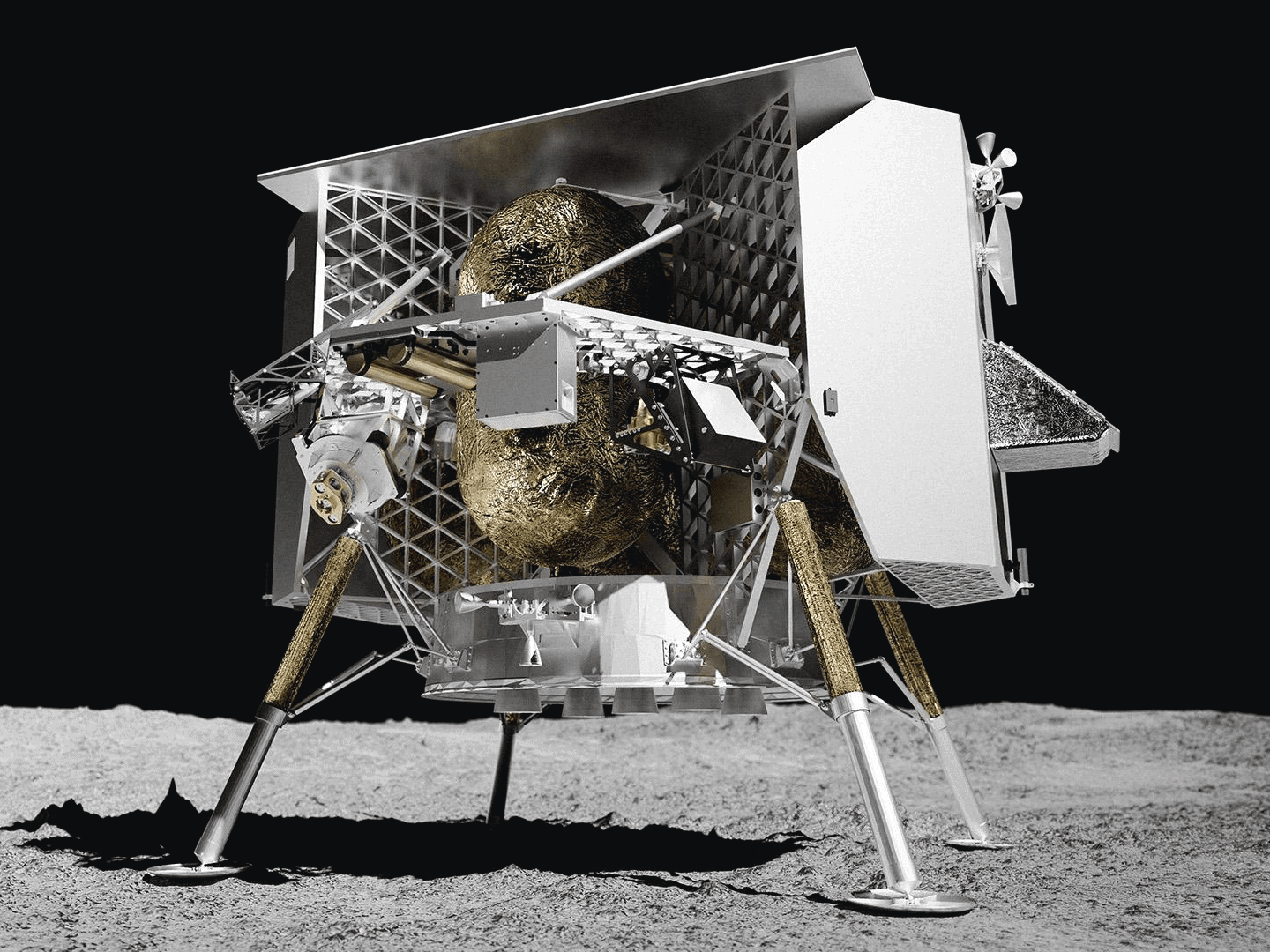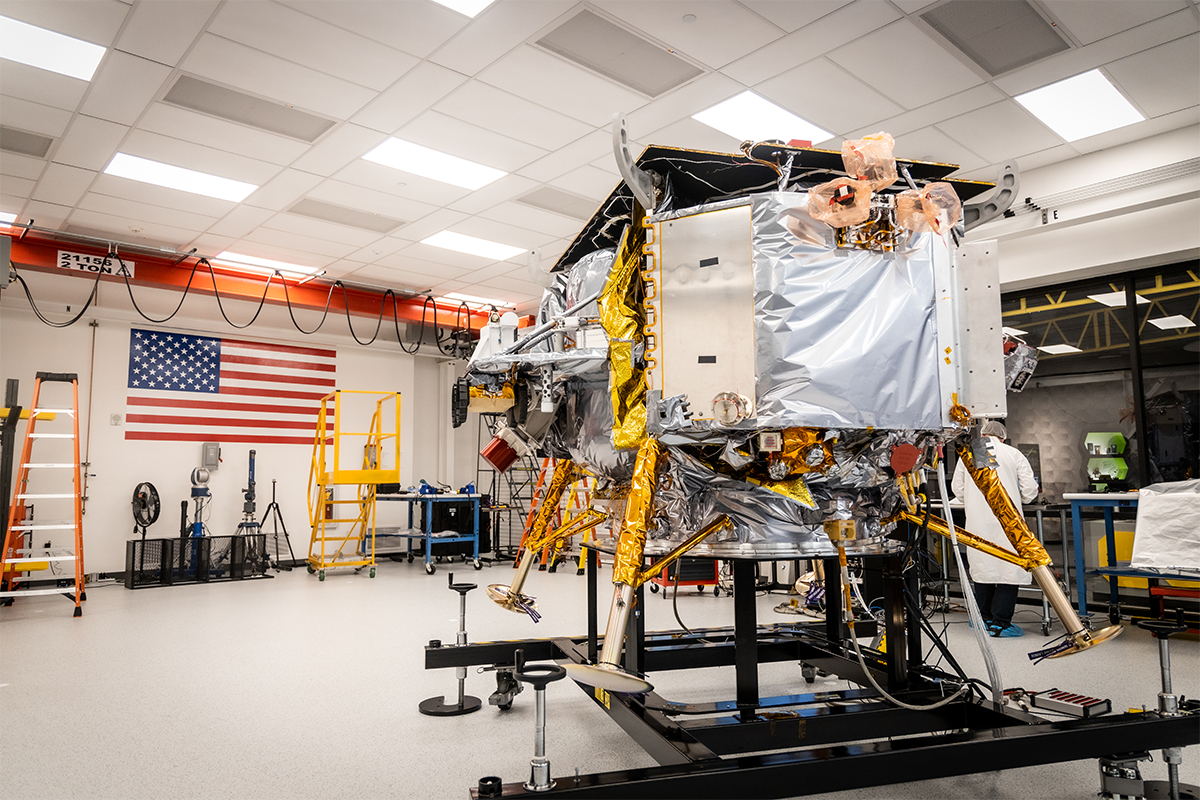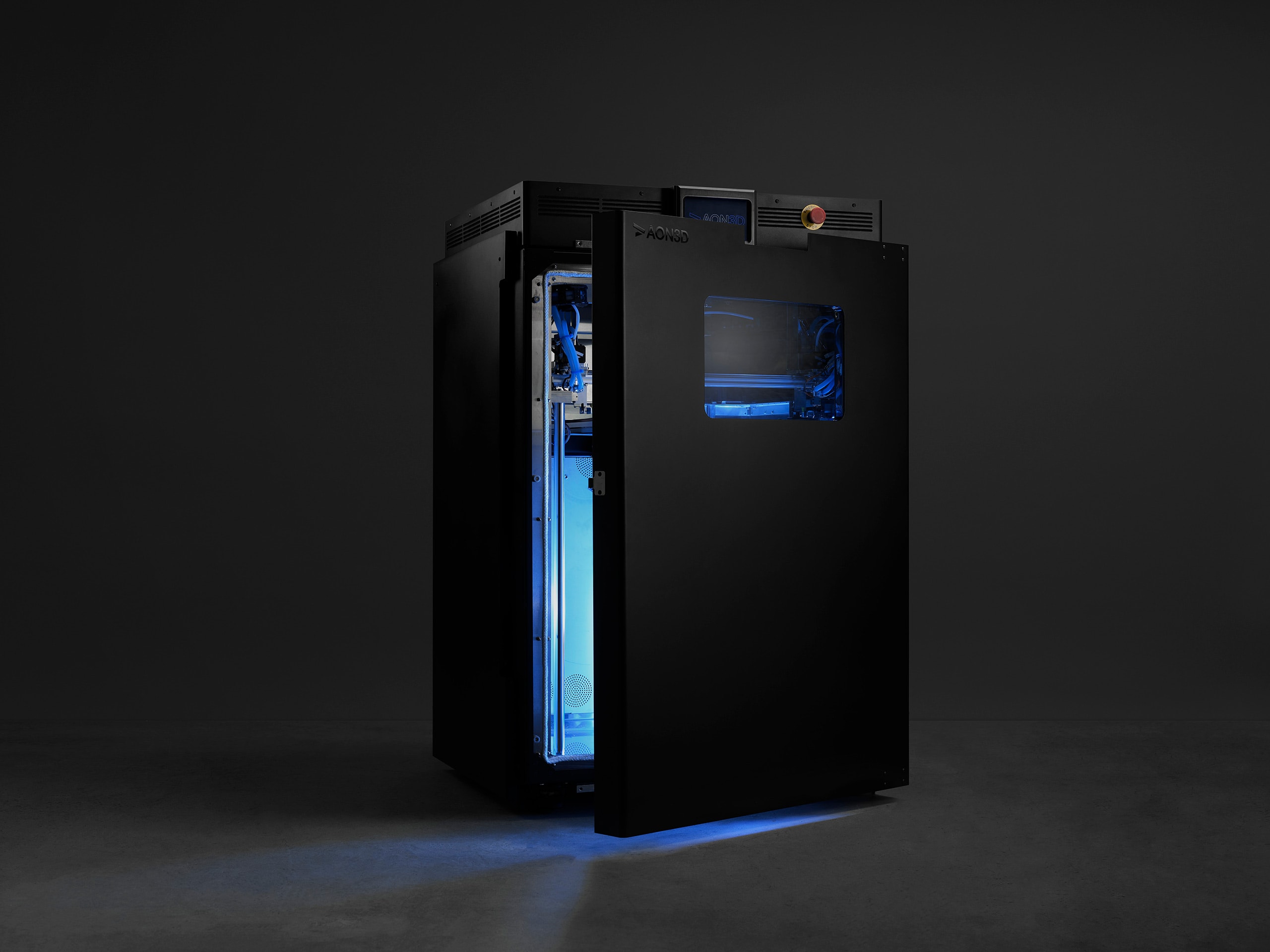Peregrine Lander Mission: Launch, Setback, and 3D Printing in Space’s Trial and Error
Half a century after the last American lunar landing, Astrobotic‘s Peregrine Mission One, the United States’ latest venture to the Moon, successfully launched on January 8, 2024, aboard a United Launch Alliance (ULA) Vulcan rocket from Cape Canaveral Space Force Station in Florida. However, a failure in the spacecraft’s propulsion system led to a critical fuel loss, forcing the team to abandon the lunar landing attempt on a mid-latitude region of the Moon called Sinus Viscositatis, or Bay of Stickiness, which was scheduled for February 23.
 Astrobotic’s Peregrine lunar lander. Image courtesy of Astrobotic.
Astrobotic’s Peregrine lunar lander. Image courtesy of Astrobotic.Astrobotic released this message just hours after Peregrine’s launch: “At this time, the goal is to get Peregrine as close to lunar distance as we can before it loses the ability to maintain its Sun-pointing position and subsequently loses power,” indicating the originally planned Moon landing will not be possible. However, since this is an ongoing story, updates about the Peregrine lander can be found at Astrobotic’s social media account.
This development is a considerable disappointment for Astrobotic and its partners, who had high hopes for Peregrine, poised to be the first commercial lunar lander and the first American lander on the Moon in 50 years.
Update #7 for Peregrine Mission One: pic.twitter.com/qAPcChVROO
— Astrobotic (@astrobotic) January 9, 2024
Although the spacecraft didn’t reach its target, the launch of Peregrine Mission One still represents a first step towards commercial lunar exploration and highlighted the innovative contributions of companies like 3D printer manufacturer AON3D. Assembled at Astrobotic’s headquarters in Pittsburgh, Pennsylvania, the Peregrine lander was a collective effort of numerous suppliers, including an impressive array of 184 companies from Pennsylvania alone.
Printed Pathways
AON3D’s role in the mission underlines the increasing significance of 3D printing in aerospace engineering. AON3D has contributed to various aspects of aerospace design and manufacturing, specializing in creating high-performance parts. Central to the company’s involvement was its M2+ printer, known for its ability to work with a wide range of high-performance materials, like Ultem. AON3D describes this high-strength, heat-resistant thermoplastic as ideal for space applications due to its durability and stability in extreme environments.
According to the company, this material was crucial in manufacturing parts that could withstand the intense conditions of space travel, such as exposure to high radiation levels and severe temperature fluctuations. Also, the M2+ printer was instrumental in creating complex components for the Peregrine lander. Its ability to handle materials like Ultem with high accuracy helped it make the parts required for the mission. This level of precision is essential in the aerospace sector, where even the slightest deviation can have significant implications.
🚀🌕 After several delays, it's official! End-use parts, printed on AON3D printers, are headed to the moon aboard @astrobotic's lunar lander for the United State's first soft landing since the Apollo missions! https://t.co/gfi6X24UZs#3dprinting #additivemanufacturing
— AON3D (@AON3D) January 6, 2024
Full-scale Avionics boxes, relays, bus bars, connectors, and other mockups and prototypes were printed in-house, saving weeks in lead times at an order of a magnitude cheaper per part. According to AON3D, hundreds of fixtures and brackets replace metal components onboard for the avionics and electrical systems, reducing vehicle mass and speeding up production. Peregrine’s avionics perform all command and data handling for the lander. In addition, AON3D created the 3D printed “Moon Boxes” for what would have been the world’s first commercial payloads delivered to the lunar surface, including two minted cryptocurrencies.
Moonshot Moment
The Peregrine Lunar Lander represents a significant venture in lunar exploration and was selected as part of NASA’s Commercial Lunar Payload Services (CLPS) initiative. Measuring approximately 1.9 meters (6.2 feet) in height and around 2.5 meters (8.2 feet) across, the Peregrine lander is a box-shaped spacecraft supported by four landing legs. Designed to carry about 20 different payloads, the lander boasts a payload mass capacity of 90 kilograms (198 pounds).
Aboard Peregrine One was a suite of five NASA payloads that aimed to locate water molecules on the Moon, measure radiation and gases around the lander, and evaluate the thin layer of lunar gases on its surface, known as the exosphere. The payloads would have provided data to NASA’s Lunar Vulkan Imaging and Spectroscopy Explorer (Lunar-VISE) instrument suite, expected to land on the lunar’s mysterious geological Gruithuisen Domes formations in 2026.
 Peregrine assembled and ready for its journey to Florida for integration with the ULA Vulcan Centaur launch vehicle. Image courtesy of Astrobotic.
Peregrine assembled and ready for its journey to Florida for integration with the ULA Vulcan Centaur launch vehicle. Image courtesy of Astrobotic.Lander’s Legacy
AON3D’s 3D printing expertise has been leveraged for other space projects beyond the Peregrine mission. Its work with NASA involves developing parts for rocket engines and satellite components, including liquid rocket engine development for landers and spacecraft. Meanwhile, the Canadian Space Agency (CSA) also employed AON3D’s M2+ 3D printer for biomedical research on the International Space Station (ISS). The printer produced centrifuges for blood sample preparation, demonstrating the advantages of reduced production times and enhanced design flexibility. AON3D also supplies printers to private companies in the space industry, like Blue Origin, Hutchinson, and the United States Air Force.
 The AON M2+. Image courtesy of AON3D.
The AON M2+. Image courtesy of AON3D.The challenges faced by Peregrine Mission One are not unique in the realm of space exploration. For example, Relativity Space‘s fully 3D printed rocket also experienced difficulties after its debut launch. Despite a successful launch in March 2023, the Terran 1 spacecraft, like Peregrine, did not reach its intended target and failed to achieve orbit due to a breakdown in the second stage. It’s clear that the landscape of space missions is marked by successes and failures, and not all spacecraft reach their orbital missions, whether they have hundreds of 3D-printed parts or none.
Nonetheless, it’s important to recognize that the trajectory of space exploration is marked by a learning curve, where established missions like those carried out by SpaceX have significantly improved their success rates over time due to their experience, advanced technologies, and iterative learning from past missions. This is particularly evident in their ongoing missions.
While newer and more experimental missions or first-time spacecraft launches, like Peregrine, tend to have a higher risk of failure or initial setbacks. However, initial failures can be an essential part of the process, and these missions are crucial for pioneering advances in space technology. Despite their challenges, these missions contribute valuable insights that propel the industry forward and contribute to the future of space exploration and innovation.
Subscribe to Our Email Newsletter
Stay up-to-date on all the latest news from the 3D printing industry and receive information and offers from third party vendors.
Print Services
You May Also Like
3D Printing Grows to $15.9B in 2024 Amid Shifting Industry Dynamics
The global additive manufacturing (AM) market reached $15.9 billion in calendar year 2024, according to “Q4 2024 3DP/AM Market Data and Forecast” from Additive Manufacturing Research (AM Research). Despite a...
Low-cost “Suzy” Polymer Powder 3D Printer is Faster and Cheaper than Past Models
Polish laser powder bed fusion (LPBF) firm Sinterit has released a follow-up to its predecessors, Lisa and Nils, called Suzy, a $19,490 printer equipped with a 30W fiber diode laser....
BellaSeno’s 3D Printed Breast Implants Keep Shape with 87% Fat Volume, Avoids Silicone Risks
At a medical conference in Austin this week, a new kind of breast implant took center stage. It is not made from silicone but from a 3D printed, fully resorbable...
Australia’s Untapped Potential as a Disruptive Innovator: SPEE3D CTO Steven Camilleri Explains Why He Wants to Make Stuff There
When I first met Steven Camilleri in 2023, the CTO of additive manufacturing (AM) OEM SPEE3D shared a quote with me from Clayton Christensen, the late Harvard professor who popularized...


























